The city of Frankfurt is a fascinating meeting between new and old. It has always been one of Germany’s richest city and a city with great political influence in Germany. It has been a locomotive of German economy and development for centuries as well, and there are so many things to see in both old and modern Frankfurt with all the high-rise office towers.
With its airport and large fairs, Frankfurt is a hub and meeting place for all of Europe and much of the world, and the international atmosphere of the modern city with its many fine museums and cultural offerings makes visiting here very exciting and with sights in and around the city center.
The distances in Frankfurt are not long. One minute you can walk between the old and idyllic half-timbered houses in the old town of Sachsenhausen, and the next moment you are surrounded by a large number of modern skyscrapers in the modern banking district. Römerberg is a good place to start strolling in Frankfurt. Here is the city’s old and attractive town hall, and churches and museums with the Kaiserdom and Städel as hightlights.
The region around Frankfurt is very beautiful with many lovely opportunities for seeing some amazing nature. The spa town of Wiesbaden and Gutenberg’s hometown of Mainz are not far away, and the drive in the Rhine river valley between Rüdesheim and Koblenz past the rocky Lorelei is unforgettably beautiful.
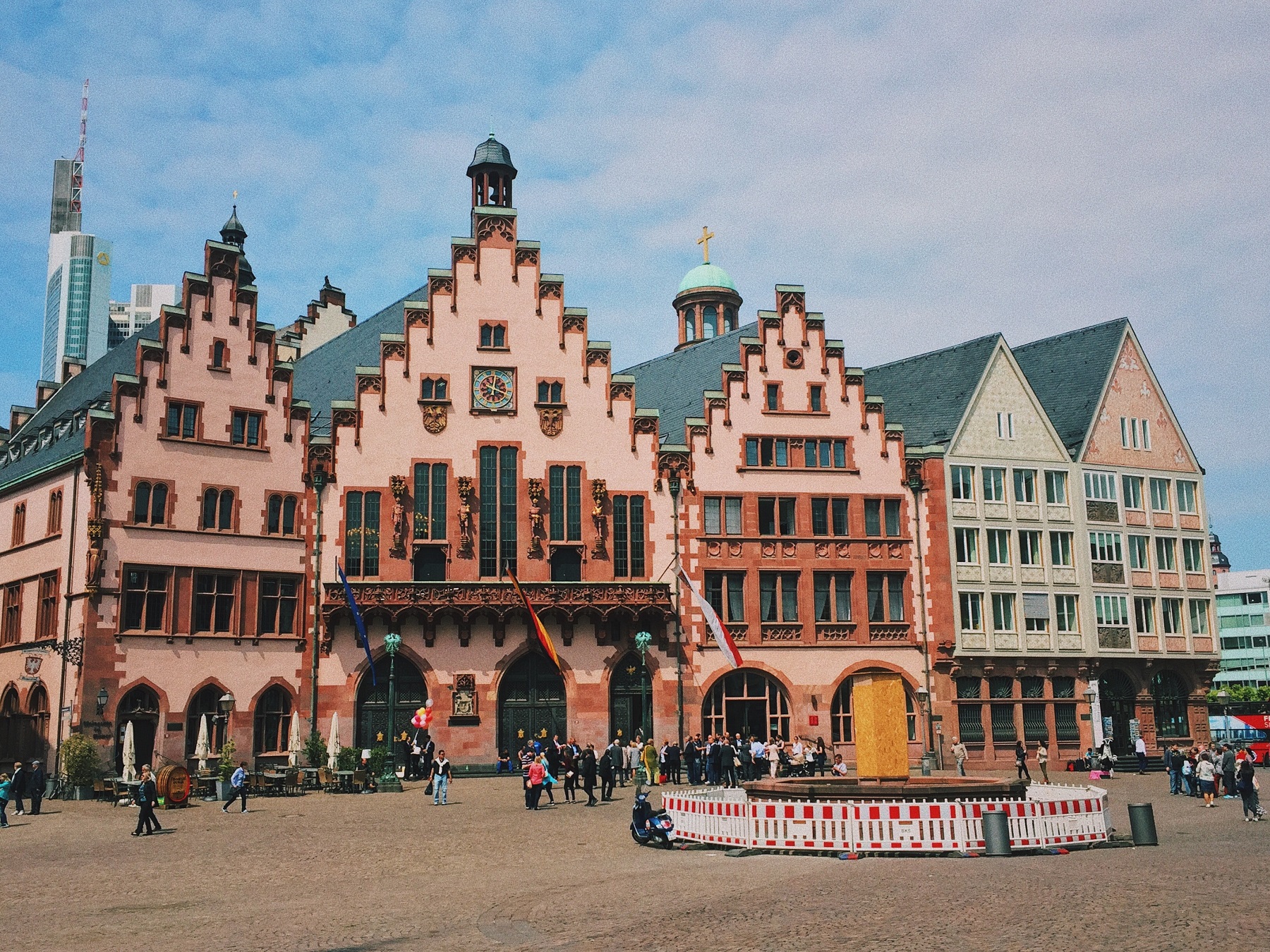
Römer is Frankfurt’s town hall, and it is a function that the wooden gable house has had since 1405. The most famous hall in Römer is the Kaisersaal, where the coronation banquets for the emperors of the Holy Roman Empire were held from 1612.
This is Frankfurt’s cathedral and one of Germany’s great historical churches. The church was for centuries the coronation church for emperors, and it has an interior that is worth seeing.
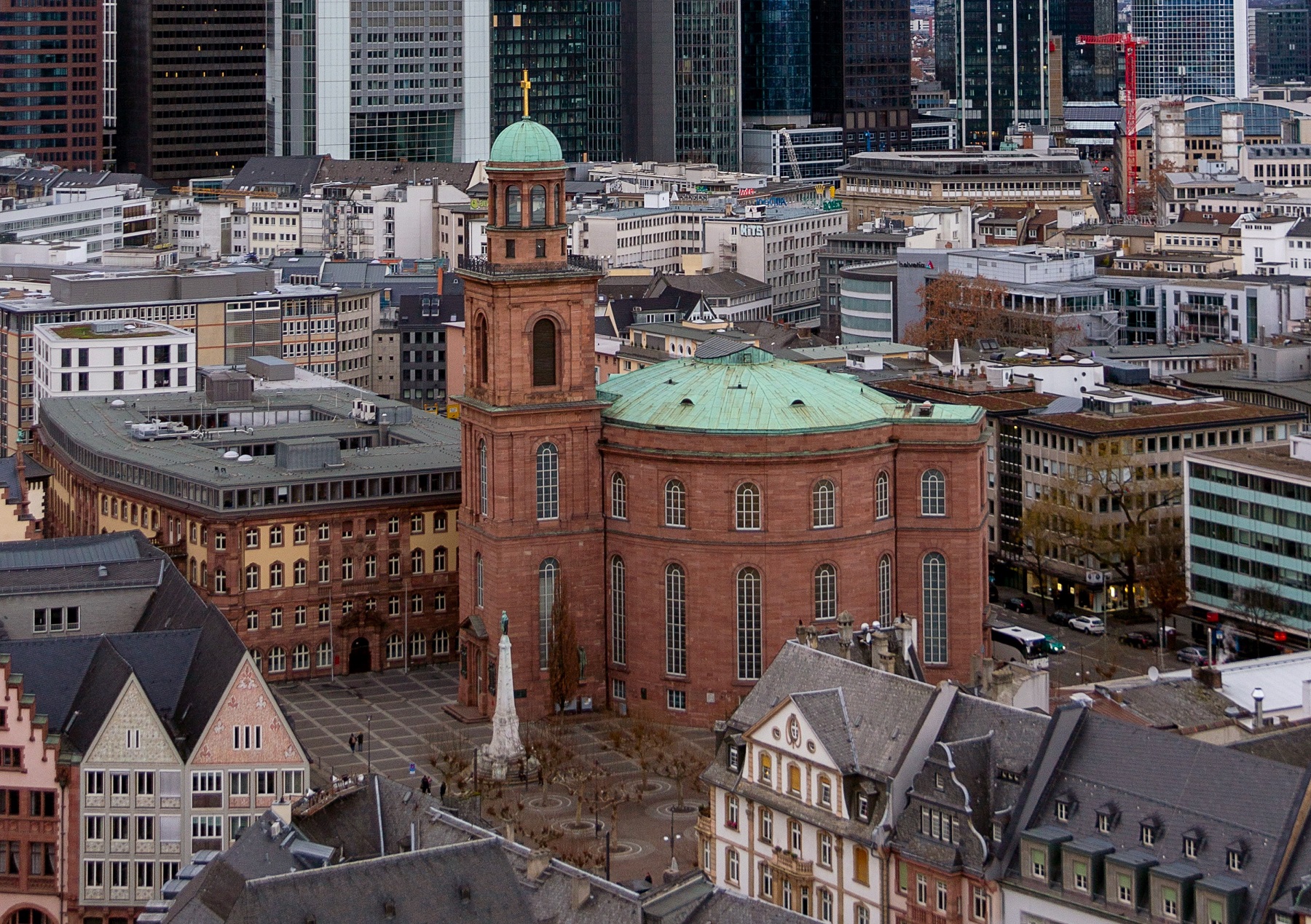
Paulskirche is one of the churches in Frankfurt that has been inscribed in the German history books. It happened in the 19th century, when the church was used as a political meeting place for Germany’s first parliament. It was also here that John F. Kennedy spoke in 1963.
This is the house where J.W. Goethe was born in 1749 and he also lived his first many years here. Today, the house is a museum where you can learn about Goethe’s life, works and contemporaries.
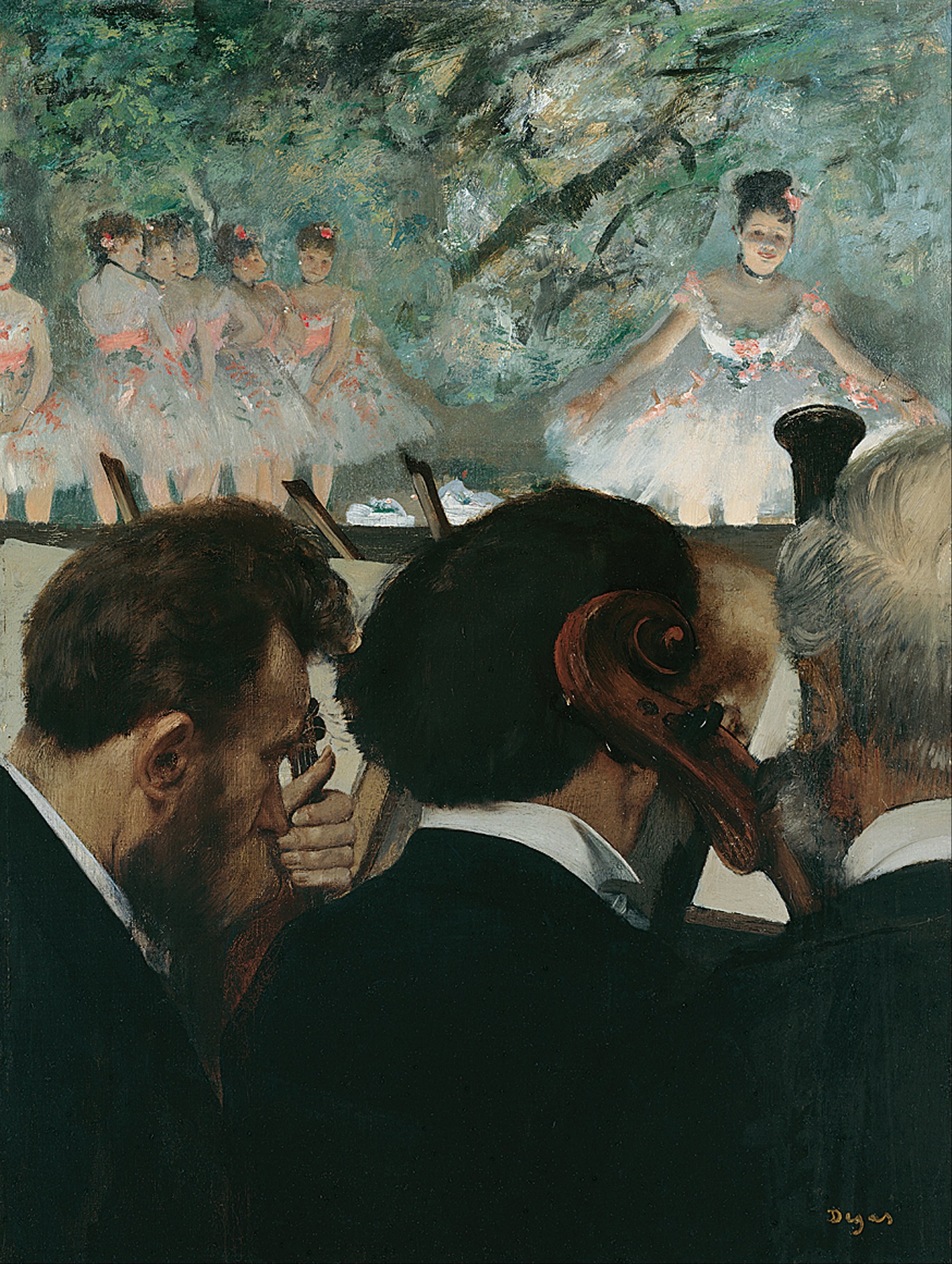
This is one of Germany’s finest art museums. The collection contains European masterpieces from the 14th and 1800s. You can see works by Van Eyck, Van Gogh, Picasso, Degas, Monet, Cézanne, Rembrandt and many others.
Sachsenhausen is the district located immediately south of the river Main close to the bridge Alte Main-Brücke. Here are cozy old streets with nice restaurants, and the neighborhood is one of Frankfurt’s most atmospheric.
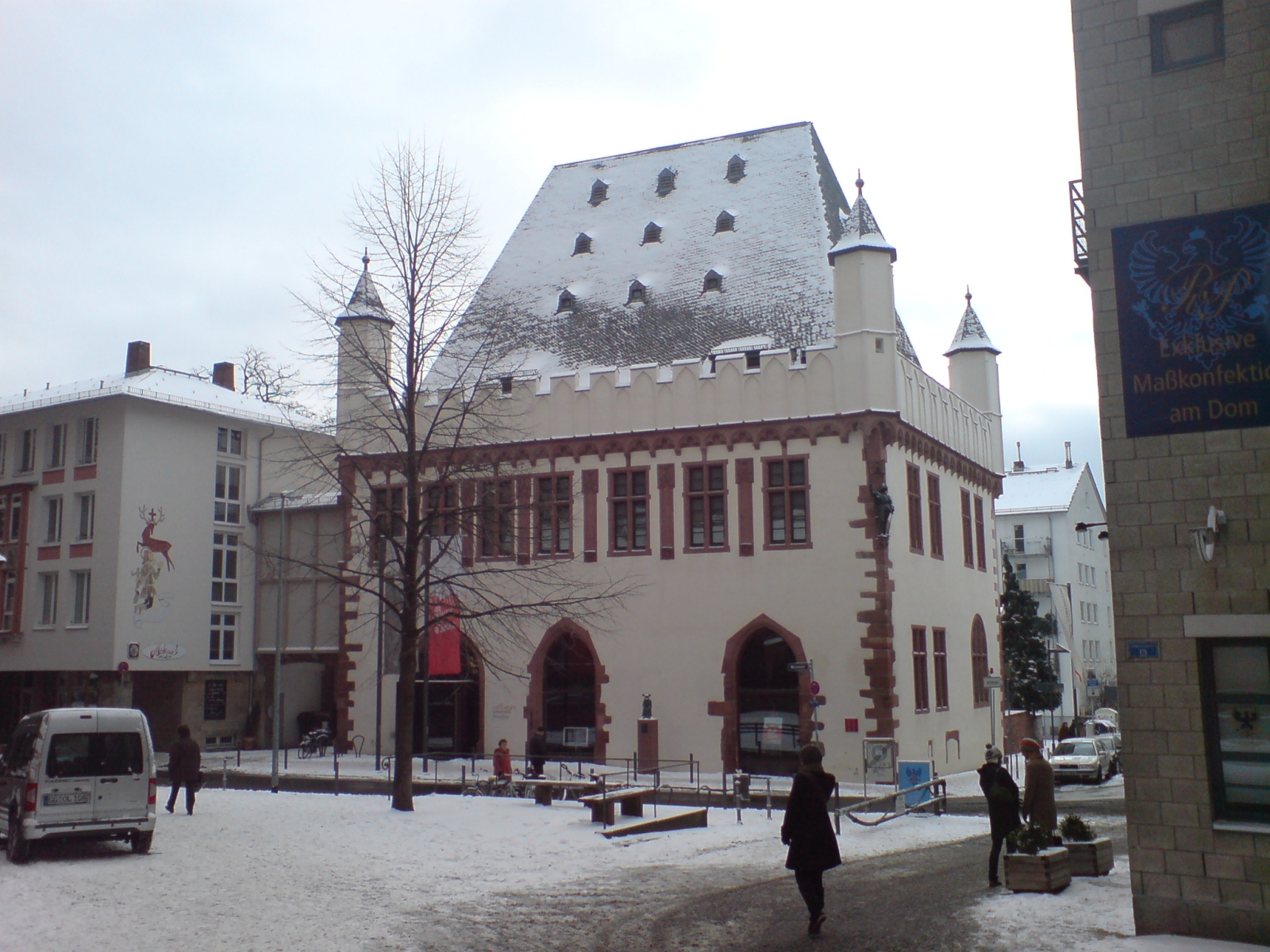
The remarkable Leinwandhaus is a late Gothic house built in the years 1396-1399. The function of the house was the customs clearance of all the linen traded at Frankfurt fairs.
The Alte Nikolaikirche is a church located centrally on the Römerberg in the center of Frankfurt. The church is believed to have been built as a small chapel as early as the 11th century and is one of Frankfurt’s notable churches.
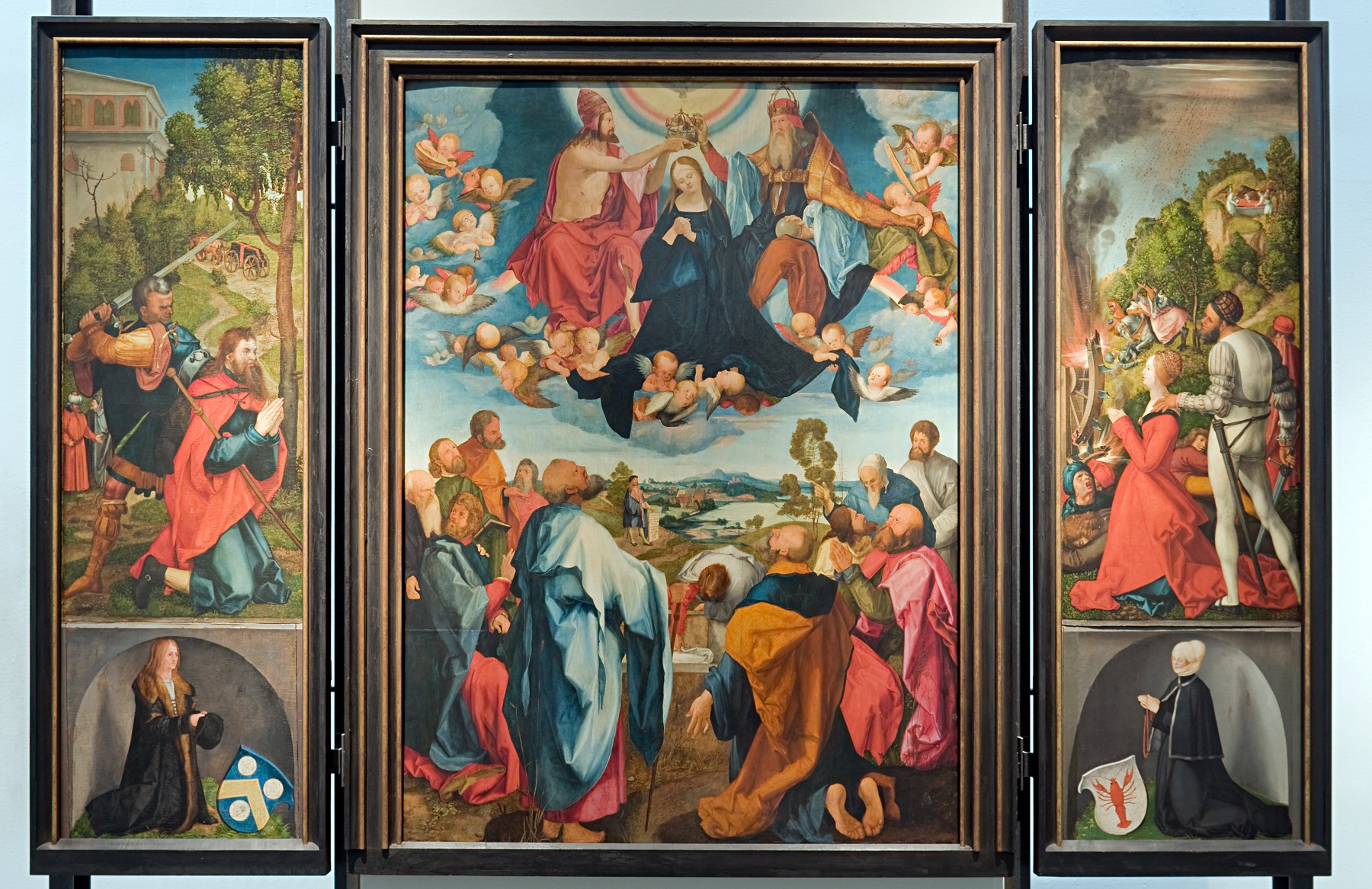
This is Frankfurt’s city history museum, and the collections and exhibitions give a good impression of the city’s history and development over time with many interesting highlights.
At this museum you can see an exciting exhibition with many modern works of art by i.a. Andy Warhol, Roy Lichtenstein and George Segal.
This monastery was founded in 1243 and functioned as such until 1803. Today you can see the church, the monastery and the site’s archeological museum on the premises.
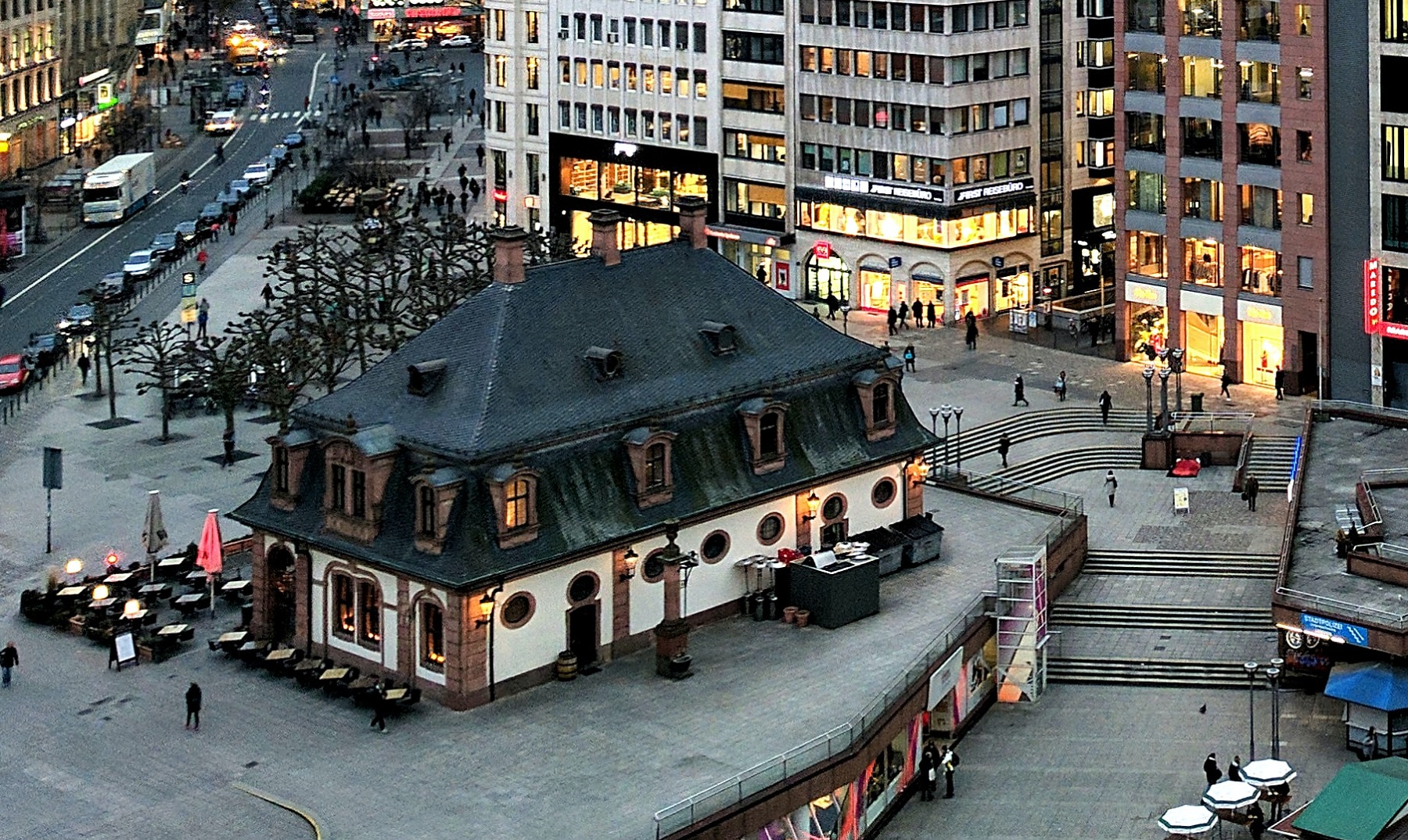
The Hauptwache was Frankfurt’s main guard building. It was built in 1671 and rebuilt 1729-1730 to its current baroque appearance. The fine building was converted into a café in the early 20th century.
This is one of Frankfurt’s and all of Germany’s most famous shopping streets. The street was developed since the end of the 19th century, and part of the street is today laid out as a pedestrian street, popular to locals abd visitors to the city.
This spire-adorned tower was built in fortress style in the years 1400-1428. The 47 meter/154 foot high tower was part of a city gate, and today it stands as one of Frankfurt’s landmarks.
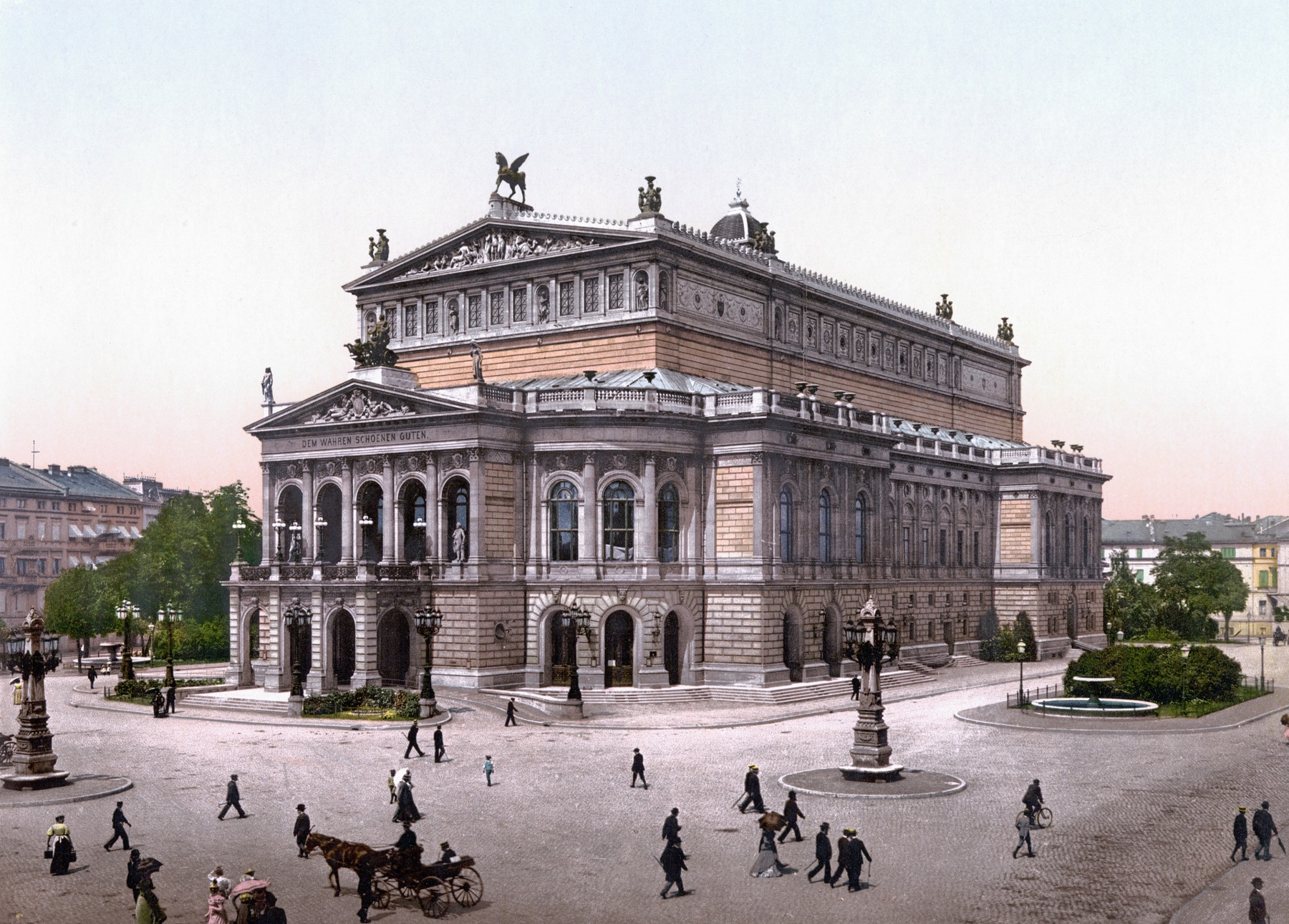
The Old Opera is Frankfurt’s beautiful opera house from 1880. The opera was destroyed during World War II, but rebuilt in the exterior after the war. However, the two halls were designed in the contemporary style of the reconstruction.
The Jüdisches Museum depicts the life and history of the Jewish people of Frankfurt in the period from the 12th to the 20th century. Here are exhibits from the Rothschild and Frank families, known from Anne Frank, and much more.
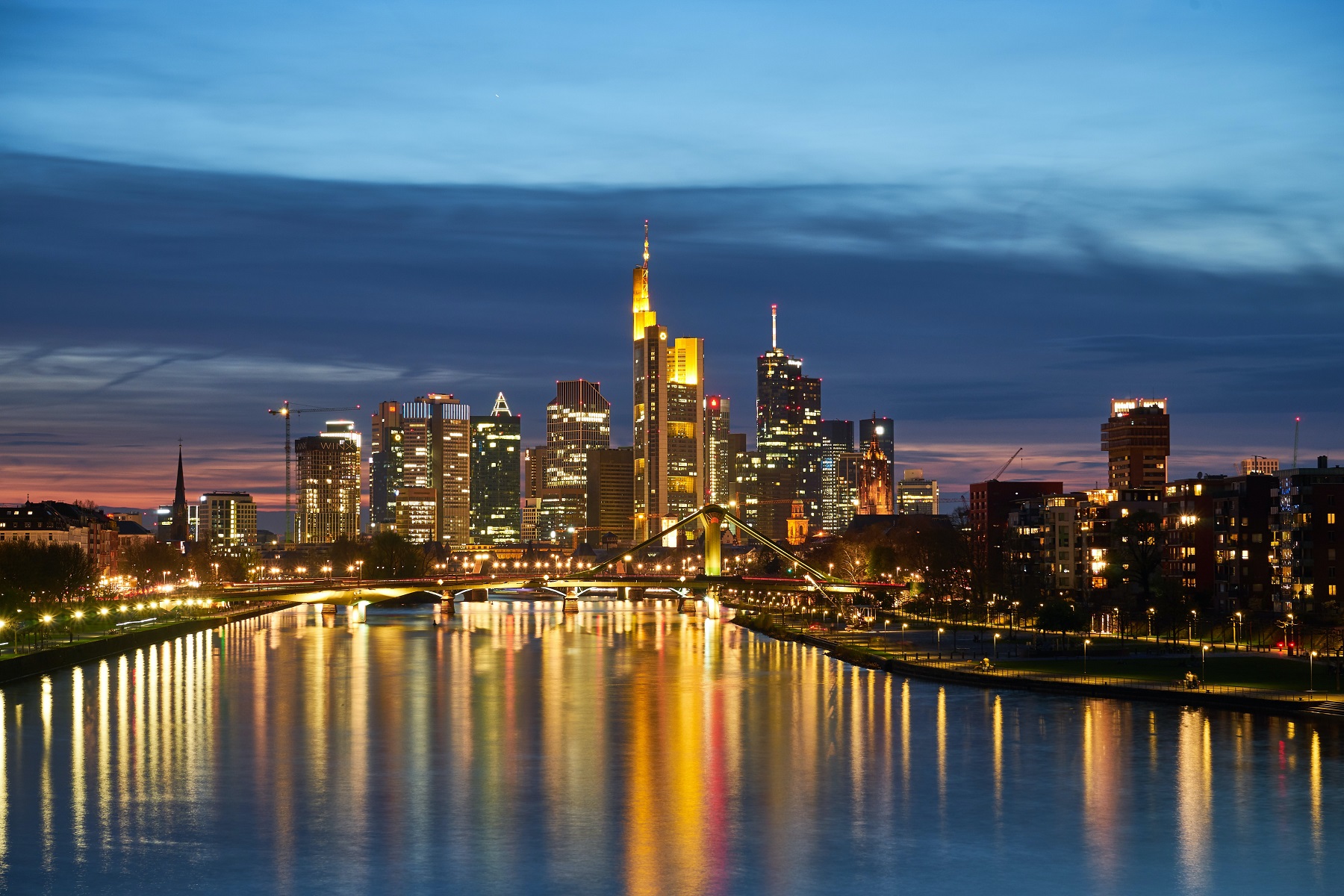
The Bankenviertel district is the core of the modern office landscape in Frankfurt with its many distinctive glass and steel skyscrapers. A walk between the skyscrapers gives a good impression of the tall buildings.
The Main Tower is a 240 meter/721 foot high office building that opened in the year 2000. It happened to be the first modern building in the city with an observation deck at the top. You can therefore enjoy an impressive view from a height of 200 meters/656 feet.
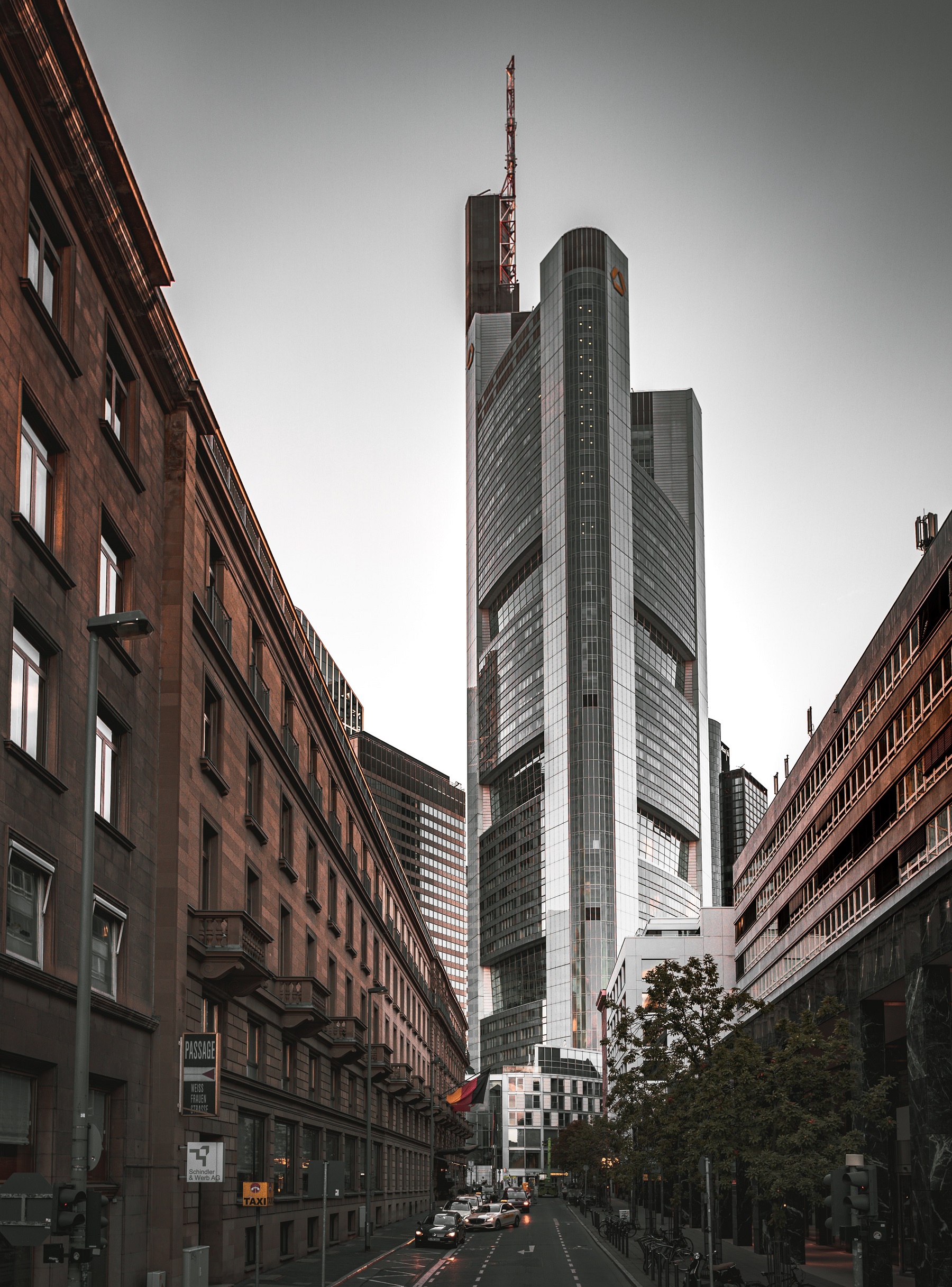
Commerzbank-Tower is a high-rise building built in 1994-1997 as the headquarters of the German bank Commerzbank. The architect Norman Foster designed what was then Europe’s tallest office building.
This large natural history museum has a very exciting collection and is after that in Berlin the largest in Germany. The museum is i.a. known for its large collection of exhibited dinosaur skeletons.
Palmengarten is a botanical garden in Frankfurt. The park was established with private funds and opened in 1871. You can go for a nice walk here and enjoy beautiful plants in the garden’s greenhouses.
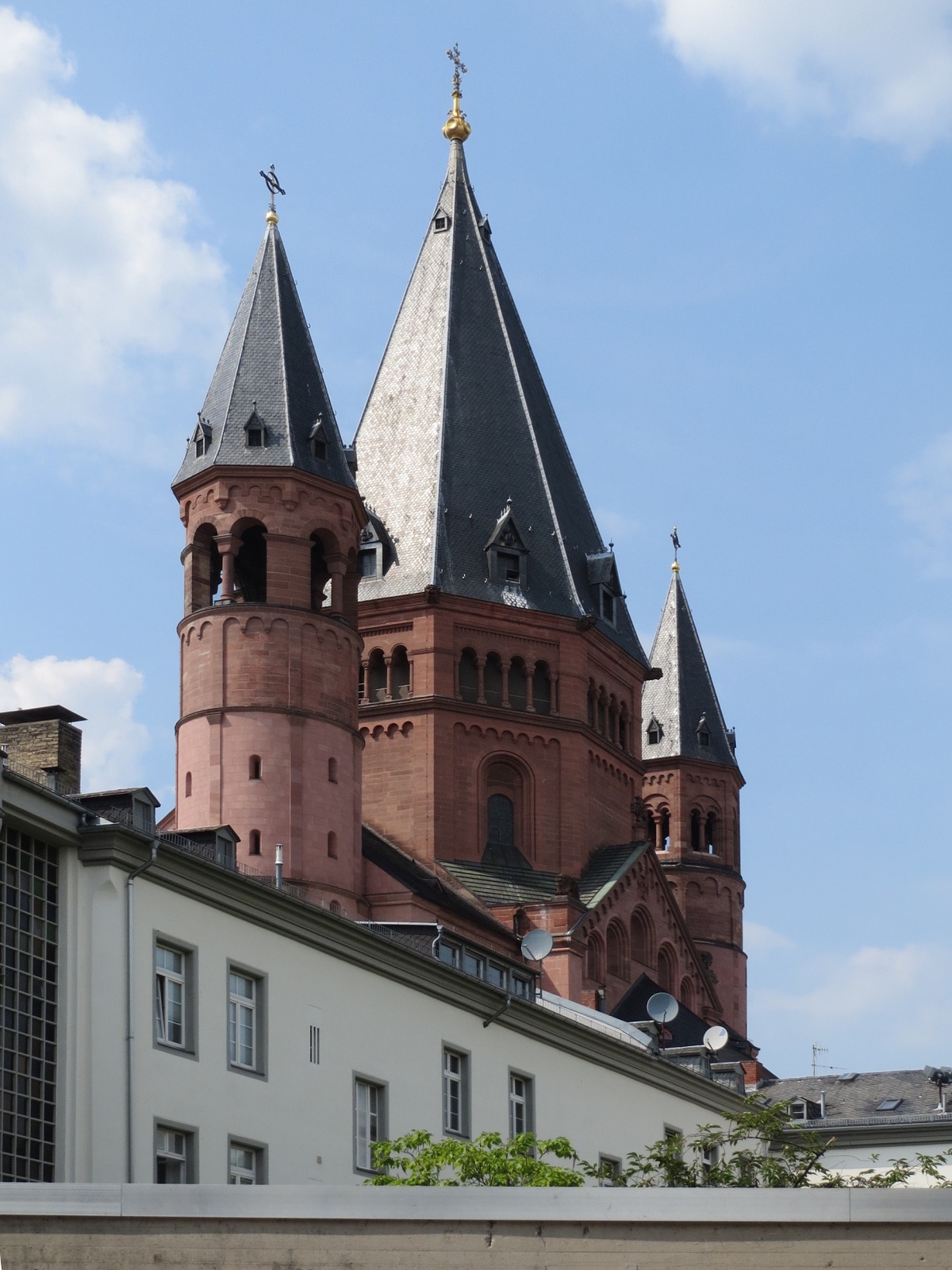
Mainz is the capital of the state of Rhineland-Palatinate. It is an old town known as the home of Johann Gutenberg, who in 1457 used the printing press technique for the first time. You can learn more about this at a museum, and you should also see the city’s large cathedral.
The city of Wiesbaden is the capital of the state of Hesse, and it is known for its hot springs, which are available for wellness various places in the city. You can also see Wiesbaden’s fine old town, the Altstadt, and get to the top of Neroberg with the Nerobergbahn cable car.
In the Wiesbaden suburb of Biebrich, you can visit the castle of the same name. It is located at the end of a lovely park towards the river Rhine. The castle was built as the residence of the Dukes of Nassau.
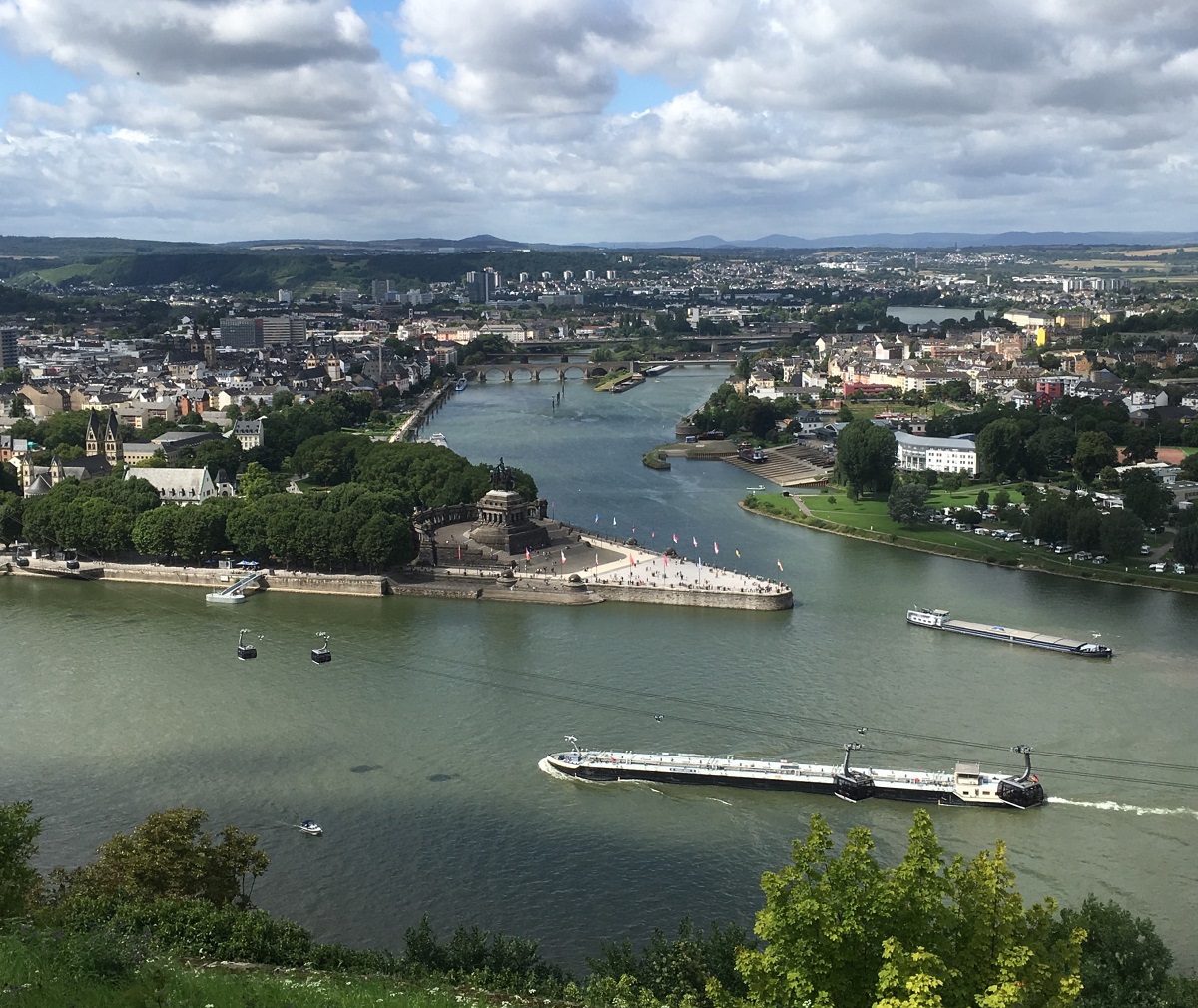
The city of Koblenz is beautifully situated on the mouth of the river Moselle in the Rhine. The famous place, Deutsches Eck, is located right at the confluence of the two rivers, and there is an equestrian statue of Emperor Wilhelm I here.
In the area west of Frankfurt you can explore perhaps the most beautiful part of the Rhine. It is at Lorelei between the towns of Rüdesheim and Koblenz, where the river flows between hills on both sides. The highlight is Lorelei, from where there is a lovely view.
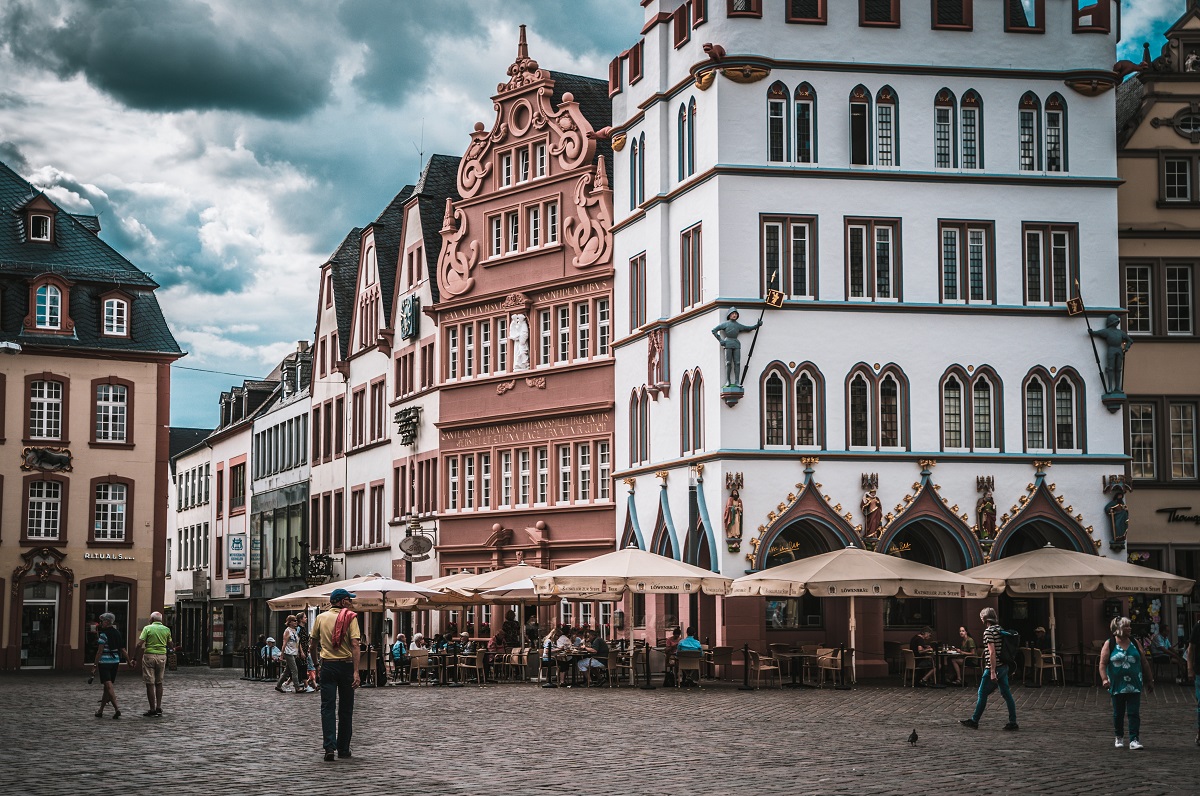
Trier is Germany’s oldest city, and here are many sights from the city’s long history. You can thus take a closer look at Trier’s Roman history. The Porta Nigra city gate is well preserved, and the ruins of the Kaiserthermen baths are also impressive.
Zeil 116-126
galeria-kaufhof.de
Zeil 90
karstadt.de
Sulzbach
main-taunus-zentrum.de
Zeil 106
myzeil.de
Limescorso 8
nwz-frankfurt.de
Zeil 71-75
peekundcloppenburg.de
Zeil 112-114
zeilgalerie.de
Zeil, Liebfrauenstraße, Steinweg, Goethestraße, Schillestraße, Berger Straße
Frankfurt Zoo
Alfred-Brehm-Platz 16
zoo-frankfurt.de
Holiday Park
Hassloch, 100 km/60 mi S
holidaypark.de
Taunus Wunderland
Schlangenbad, 50 km/30 mi W
taunuswunderland.de
Frankfurt is known to be inhabited from Roman times, when the road between Moguntisacum and Nida cut through the Main Valley. The city originated in the present Old Town, where a hill between Main’s river arms provided natural protection against any enemies.
The Romans are believed to have settled on the hill in the century BC, and since then several traces of their presence have been found. From the first centuries, there are remnants of Roman baths, which of course were associated with defense works. The military position was changed in the 200’s to, among other things, a villa with several farms.
The Roman history of Frankfurt ended in the years 259-260 when the Roman Empire’s border in the area was moved to the western bank of the Rhine.
In the centuries following the Roman retreat, little is known about the history of Frankfurt, which is once again known from 793. Here the city was mentioned in writing, which was repeated the following year.
794 was also the year in which Emperor Charlemagne made Frankfurt one of its residential towns. The emperor called the city of Franconovurd, which meant the fort of the Franks, and it immediately became the center of an ecclesiastical meeting among bishops from all over France, Italy, Aquitania and England. Pope Adrian I was also represented at the meeting.
After Charlemagne’s time, Ludwig came to the throne, and he chose Frankfurt as his residence city. Ludwig expanded Frankfurt with a larger palace from 828, and he expanded the city’s fortifications so that in 838 it was surrounded by defense works.
In 843, Frankfurt became the official capital of the Eastern Franc, which naturally gave rise to new activity and growth. Kings and emperors were often in the city, which was also the center of many important meetings. The Emperor of France no longer had a permanent residence, but Frankfurt maintained its imperial importance.
After a time of decline in the importance of the city, Frankfurt again became the center of significant events in the 12th century. In a local church, Bernhard of Clairvaux initiated part of the Second Crusade, and he called King Konrad III of Hohenstaufen. This happened in 1147, when Konrad appointed his ten-year-old son as heir before the voyage. However, the son died before the father, and thus a new king was to be found.
Frederick Barbarossa was elected as the new king in 1152, and then Frankfurt became the hometown of ceremonies for coronations by German rulers; it was Frederick Barbarossa who instituted this tradition at his own coronation in the city.
Throughout the 12th century, Frankfurt developed significantly. The city had been a hub of trade since the Roman times, and Frankfurt’s trade fairs and markets had become so well-known and important that merchants from large parts of Europe came to them.
Frankfurt was a free city under the Hohenstaufen emperors, and its significant economic growth brought new rights for citizens. The citizens, for example, chose their own mayors and officials and thus had a great influence on the administration of Frankfurt.
Frankfurt continued to develop rapidly after the 1100s, and it had become one of the most important German cities, not least due to extensive trade. Frederick II guaranteed the safety of transit through Frankfurt in 1240, providing further growth for the major trade fairs and general trade. Frankfurt was at that time the economic locomotive in the German area.
In 1356, after a while Frankfurt became the site of coronations by German kings. However, the city established its own city state 16 years later, and it was Freie Reichstadt Frankfurt. The formation of the city-state could be done after Frankfurt bought himself free of Karl IV. In this way, a high degree of autonomy prevailed, although the city was formally still subject to the emperor himself.
In 1405, the city council bought the two buildings that still today act as Frankfurt’s city hall. In the same century, the Jewish quarter of the city was built, and the supreme imperial court was founded in the city during this time. Frankfurt was not only a trading town, but also home to important institutions and traditions.
At the beginning of the 16th century, the Reformation was gradually introduced. However, it first became official in Frankfurt in 1533, when public practice of the Catholic faith was banned at the same time for a period of 15 years.
In 1585, Frankfurt’s financial stock exchange was established, and for the first time, the city came to decide on currency and financial resources. Frankfurt’s wealth at that time far exceeded that of most other German cities, and trade, arts and industry flourished.
The letterpress art had been established in nearby Mainz, and it got infected in Frankfurt, where knowledge and education became a priority. In addition, the most important book fair in Germany was held in Frankfurt for several centuries.
Over time, Frankfurt has been repeatedly occupied. In the years 1631-1635 Swedish troops came to the area in connection with the 30-year war, where Frankfurt otherwise maintained neutrality. The Swedish king Gustav Adolf demanded shelter and supplies for the Swedish troops, and the city was through diplomacy.
Frankfurt became imperial residence in the German-Roman Empire 1742-1745 when Karl VII moved his court to this. A few years later, in 1749, one of the city’s great sons was born; Johann Wolfgang von Goethe, whose works later became world famous.
The city was constantly evolving, but it was also a time of several French occupations. During the Seven Years’ War, France conquered the city in the years 1759-1763, and only a few decades later French forces returned during the Napoleonic Wars.
In 1792, the last imperial coronation took place in Frankfurt. It was Franz II’s inauguration ceremony in the city, which at that time housed 35,000 inhabitants. That same year, Frankfurt was occupied by French troops from October to December.
A few years later, the city could develop further geographically, as old defenses were eroded and converted into parks in 1804, but the time as a sanctuary did not last long afterwards. In 1806, the German-Roman Empire fell, and Frankfurt was again occupied by France, which ended the city’s status by granting it to Karl Theodor Anton Maria von Dalberg, who ruled it until 1810, when Frankfurt was made Grand Duchy.
After Napoleon’s fall, the German territory was divided into more than 30 urban states and smaller rural areas. Frankfurt in 1816 became the seat of the German Reichstag under the German Confederation, while the city itself had been confirmed its status as a free city at the Vienna Congress.
1848 became a landmark for Frankfurt and for the German states. This year, a number of people met in Frankfurt’s Paul Church on May 18. It was the first free parliamentary session in Germany, and it was to be the start of the later German democratization process.
Frankfurt was the center of political life for the many German states, but there was also an uproar among the city’s inhabitants. Throughout 1848, the burgeoning revolutions were knocked down several times, and it was not least in the Sachsenhausen neighborhood, it smoldered.
The 19th century was also other than politics. Economically, the city was developed through industry, commerce and transportation. The first railroad opened in 1839, and many new projects saw the light of day. For example, the railways were expanded, a zoo established, and the Frankfurter Zeitung starts in the following decades when Frankfurt grew to a population of 71,000 in 1861.
In 1863, a series of political meetings for closer German unity began in Frankfurt. It came to reforms that made it possible to approximate one another among the German states, but as Prussia did not support the reforms, the project declined. In 1866, instead, the Prussian-Austrian war broke out, with the states fighting for power in the German Confederation. Prussia won over Austria and occupied Frankfurt, which was made part of the province of Hessen-Nassau, which served as a province until 1918.
In the first decades of the 20th century, several institutions were established in Frankfurt, such as the Museum der Weltkulturen in 1904 and the city’s university ten years later. The same year as the university’s founding, World War I broke out, which ended the German empire. Germany became a republic after the war, and Frankfurt was naturally part of it.
In time, more than 400,000 people lived in Frankfurt, which continued to evolve. Large facilities such as the new Frankfurt Airport and the industrial giant IG Farben’s headquarters were established in 1926 and 1931 respectively.
At the Nazi takeover of the country in 1933, changes immediately occurred in Frankfurt. The city’s Jewish mayor was replaced by NSDAP member Friedrich Krebs, who was in office until 1945. Five years later, most of Frankfurt’s synagogues were destroyed during the Crystal Night, and eventually World War II drew near.
During World War II, Frankfurt was subject to severe fighting and countless aerial bombardments, which destroyed 80% of the city. The area’s most important trade and industry had been wiped out, and a colossal reconstruction was underway after the end of the war in 1945.
The new Germany in the 1940s became two states; West Germany and East Germany. The former free city of Frankfurt became part of the state of Hesse, whose capital was Wiesbaden. Instead, Frankfurt was a candidate to become the West German capital, but after close polls Bonn gained this status.
In the years that followed, Frankfurt became one of the symbols of the German Wirtschaftswunder, which was the term for the explosive economic development. Modern neighborhoods and financial institutions shot up in the city, whose skyline with the many glass and steel skyscrapers became unique in Europe through the latter half of the 20th century.
At the same time, a reconstruction of Frankfurt’s Old Town around Römerberg was completed, where you can experience the atmosphere of earlier centuries. It was decided to save the street network from before the Second World War to build on old and traditional Frankfurt. Together with Hamburg and Munich, Frankfurt became the leader in West Germany, and the city’s airport grew into one of the largest in the world.
Today, Frankfurt is one of the continent’s most international cities, and it is the financial center for not only Germany, but for transactions in large parts of the world.
Overview of Frankfurt
The city of Frankfurt is a fascinating meeting between new and old. It has always been one of Germany’s richest city and a city with great political influence in Germany. It has been a locomotive of German economy and development for centuries as well, and there are so many things to see in both old and modern Frankfurt with all the high-rise office towers.
With its airport and large fairs, the city is a hub and meeting place for all of Europe and much of the world, and the international atmosphere of the modern city with its many fine museums and cultural offerings makes visiting here very exciting and with sights in and around the city center.
About the upcoming Frankfurt travel guide
About the travel guide
The Frankfurt travel guide gives you an overview of the sights and activities of the German city. Read about top sights and other sights, and get a tour guide with tour suggestions and detailed descriptions of all the city’s most important churches, monuments, mansions, museums, etc.
Frankfurt is waiting for you, and at vamados.com you can also find cheap flights and great deals on hotels for your trip. You just select your travel dates and then you get flight and accommodation suggestions in and around the city.
Read more about Frankfurt and Germany
Buy the travel guide
Click the “Add to Cart” button to purchase the travel guide. After that you will come to the payment, where you enter the purchase and payment information. Upon payment of the travel guide, you will immediately receive a receipt with a link to download your purchase. You can download the travel guide immediately or use the download link in the email later.
Use the travel guide
When you buy the travel guide to Frankfurt you get the book online so you can have it on your phone, tablet or computer – and of course you can choose to print it. Use the maps and tour suggestions and you will have a good and content-rich journey.
Fine Museums • Great Churches • Sachsenhausen • Highrise Buildings
Overview of Frankfurt
The city of Frankfurt is a fascinating meeting between new and old. It has always been one of Germany’s richest city and a city with great political influence in Germany. It has been a locomotive of German economy and development for centuries as well, and there are so many things to see in both old and modern Frankfurt with all the high-rise office towers.
With its airport and large fairs, the city is a hub and meeting place for all of Europe and much of the world, and the international atmosphere of the modern city with its many fine museums and cultural offerings makes visiting here very exciting and with sights in and around the city center.
About the upcoming Frankfurt travel guide
About the travel guide
The Frankfurt travel guide gives you an overview of the sights and activities of the German city. Read about top sights and other sights, and get a tour guide with tour suggestions and detailed descriptions of all the city’s most important churches, monuments, mansions, museums, etc.
Frankfurt is waiting for you, and at vamados.com you can also find cheap flights and great deals on hotels for your trip. You just select your travel dates and then you get flight and accommodation suggestions in and around the city.
Read more about Frankfurt and Germany
Buy the travel guide
Click the “Add to Cart” button to purchase the travel guide. After that you will come to the payment, where you enter the purchase and payment information. Upon payment of the travel guide, you will immediately receive a receipt with a link to download your purchase. You can download the travel guide immediately or use the download link in the email later.
Use the travel guide
When you buy the travel guide to Frankfurt you get the book online so you can have it on your phone, tablet or computer – and of course you can choose to print it. Use the maps and tour suggestions and you will have a good and content-rich journey.

The remarkable Leinwandhaus is a late Gothic house built in the years 1396-1399. The function of the house was the customs clearance of all the linen traded at Frankfurt fairs.
The Alte Nikolaikirche is a church located centrally on the Römerberg in the center of Frankfurt. The church is believed to have been built as a small chapel as early as the 11th century and is one of Frankfurt’s notable churches.

This is Frankfurt’s city history museum, and the collections and exhibitions give a good impression of the city’s history and development over time with many interesting highlights.
At this museum you can see an exciting exhibition with many modern works of art by i.a. Andy Warhol, Roy Lichtenstein and George Segal.
This monastery was founded in 1243 and functioned as such until 1803. Today you can see the church, the monastery and the site’s archeological museum on the premises.

The Hauptwache was Frankfurt’s main guard building. It was built in 1671 and rebuilt 1729-1730 to its current baroque appearance. The fine building was converted into a café in the early 20th century.
This is one of Frankfurt’s and all of Germany’s most famous shopping streets. The street was developed since the end of the 19th century, and part of the street is today laid out as a pedestrian street, popular to locals abd visitors to the city.
This spire-adorned tower was built in fortress style in the years 1400-1428. The 47 meter/154 foot high tower was part of a city gate, and today it stands as one of Frankfurt’s landmarks.

The Old Opera is Frankfurt’s beautiful opera house from 1880. The opera was destroyed during World War II, but rebuilt in the exterior after the war. However, the two halls were designed in the contemporary style of the reconstruction.
The Jüdisches Museum depicts the life and history of the Jewish people of Frankfurt in the period from the 12th to the 20th century. Here are exhibits from the Rothschild and Frank families, known from Anne Frank, and much more.

The Bankenviertel district is the core of the modern office landscape in Frankfurt with its many distinctive glass and steel skyscrapers. A walk between the skyscrapers gives a good impression of the tall buildings.
The Main Tower is a 240 meter/721 foot high office building that opened in the year 2000. It happened to be the first modern building in the city with an observation deck at the top. You can therefore enjoy an impressive view from a height of 200 meters/656 feet.

Commerzbank-Tower is a high-rise building built in 1994-1997 as the headquarters of the German bank Commerzbank. The architect Norman Foster designed what was then Europe’s tallest office building.
This large natural history museum has a very exciting collection and is after that in Berlin the largest in Germany. The museum is i.a. known for its large collection of exhibited dinosaur skeletons.
Palmengarten is a botanical garden in Frankfurt. The park was established with private funds and opened in 1871. You can go for a nice walk here and enjoy beautiful plants in the garden’s greenhouses.
Similar to Frankfurt Travel Guide
There are no listings matching your search.
Reset